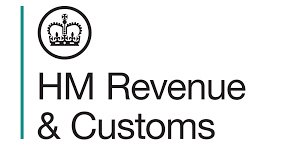HMRC SDLT: List of Public Bodies in England and Wales for Transfer Reliefs
SDLTM25010 – Reliefs: Transfers Involving Public Bodies
This section outlines various public bodies in England and Wales involved in transfers eligible for reliefs. It categorises these bodies under government, local government, health, and other authorities, detailing specific entities within each category.
- Government and Parliament: Includes Ministers, the National Assembly for Wales, and Corporate Officers of the Houses of Parliament.
- Local Government: Covers councils established under the Local Government Act 1972, including London boroughs and the Greater London Authority.
- Health: Lists various health authorities and trusts established under the National Health Service Acts.
- Other: Includes any local planning authority as defined by the Town and Country Planning Act 1990.
“`

Read the original guidance here:
HMRC SDLT: List of Public Bodies in England and Wales for Transfer Reliefs
SDLT Reliefs: Transfers Involving Public Bodies
When transferring property between public bodies in England and Wales, certain reliefs from Stamp Duty Land Tax (SDLT) may apply. This means that sometimes these transactions won’t incur the usual SDLT costs. Let’s explore what this involves and who can benefit from these reliefs.
Who is Considered a Public Body?
A public body is any organisation that is governed by public law and operates to serve the public good. Below is a list of recognised public bodies in England and Wales:
- Government and Parliament:
- A Minister of the Crown
- The National Assembly for Wales Commission
- The Corporate Officer of the House of Lords
- The Corporate Officer of the House of Commons
- The Welsh Ministers
- The First Minister for Wales
- The Counsel General to the Welsh Assembly Government
- Local Government:
- A county or district council established under Section 2 of the Local Government Act 1972
- A county or county borough council established under Section 21 of the Local Government Act 1972
- The council of a London borough
- The Greater London Authority
- The Common Council of the City of London
- The Council of the Isles of Scilly
- Health Authorities:
- A Strategic Health Authority or Health Authority established under Section 13 of the National Health Service Act 2006
- A Special Health Authority established under Section 28 of the NHS Act 2006 or Section 22 of the NHS (Wales) Act 2006
- A Primary Care Trust established under Section 18 of the NHS Act 2006
- A Local Health Board established under Section 11 of the NHS (Wales) Act 2006
- A National Health Service Trust established under Section 25 of the NHS Act 2006 or Section 18 of the NHS (Wales) Act 2006
- Other Authorities:
- Any other authority defined as a local planning authority under the Town and Country Planning Act 1990
When is Relief Applicable?
The relief from SDLT applies when the transfer of property or land occurs between two public bodies. Here are some scenarios where you might see this relief in action:
- Transfer Between Local Authorities: If one local council sells property to another local council, they may qualify for relief.
- Health Authority Transfers: If a primary care trust transfers property to a health authority, they may also be exempt from SDLT.
- Governmental Transfers: A minister transferring land or property to the National Assembly for Wales may not incur SDLT.
Understanding SDLT Reliefs
Stamp Duty Land Tax (SDLT) is a tax on property transactions in the UK. However, certain exemptions apply in specific cases, particularly when public bodies are involved. Understanding how to navigate these reliefs can save money for taxpayers and public authorities. Here are some key points:
- Eligibility for Relief: Not all transfers between public bodies qualify for relief. There are criteria that need to be met. It is essential to confirm that both parties are recognized public bodies.
- Documentation: When applying for SDLT relief, appropriate documentation must be provided to demonstrate eligibility. This can include official confirmations of status as public bodies.
- Knowing the Law: Familiarity with the relevant sections of the legislation, such as the Local Government Act and the National Health Service Act, is beneficial when applying for relief.
How to Apply for SDLT Relief
Applying for SDLT relief should be done with care, ensuring that all requirements are met. Here are the steps involved:
- Confirm Public Body Status: Verify that both parties in the transaction are listed as public bodies according to the classifications provided.
- Prepare Documentation: Gather all necessary documents that prove eligibility for SDLT relief. This may include agreements or transfer documents that showcase the nature of the transaction.
- Complete the SDLT Return: Fill out the SDLT return form accurately, ensuring all sections are completed and that it clearly states the relief being claimed.
- Submit to HMRC: Send the completed SDLT return, along with any supporting documentation, to HMRC before the deadline.
Examples of Reliefs in Action
Several real-world scenarios illustrate how public bodies can benefit from SDLT relief:
- Case Study 1: A local council transfers a piece of land to a neighbouring borough council. Because both are public authorities, this transfer would be eligible for SDLT relief, allowing both councils to save funds that could be better used elsewhere.
- Case Study 2: A health trust owns a property that it no longer uses. When it transfers this property to a Strategic Health Authority, neither party pays SDLT on the transaction due to the relief provision.
- Case Study 3: The Ministry of Housing decides to give property to the National Assembly for Wales. Since both are public bodies, this transfer qualifies for SDLT relief, supporting efficient use of taxpayer money.
Additional Considerations
When transferring property under SDLT relief, there are extra factors to keep in mind:
- Different Types of Properties: Make sure to clarify the type of properties involved. Reliefs might vary based on whether the property is residential or commercial.
- Potential Future Charges: Even if the current transfer does not incur SDLT, keep in mind future developments and transactions might lead to tax obligations.
- Compliance with Local Rules: Apart from SDLT, public authorities must also ensure compliance with local laws governing property transfer and planning permissions.
Conclusion
N/A







